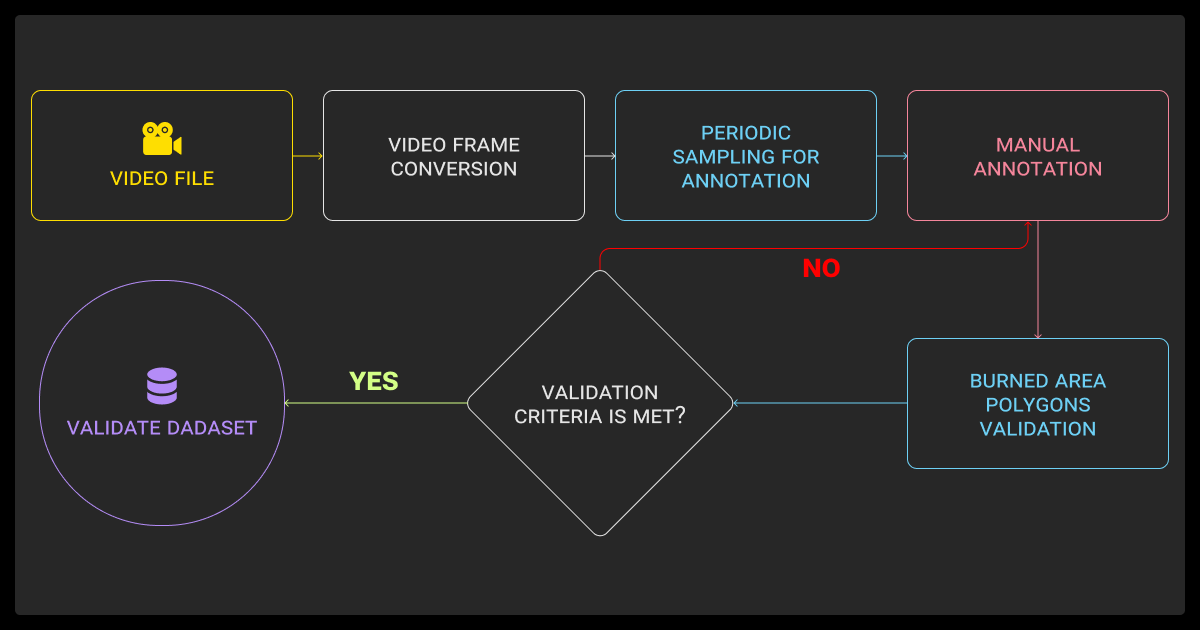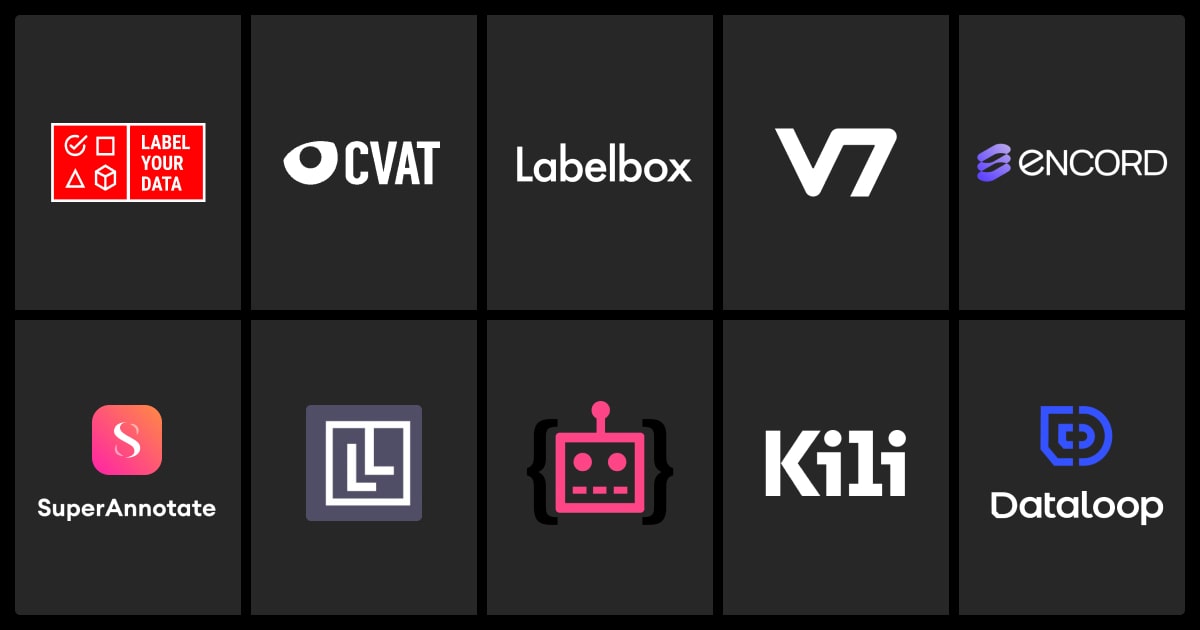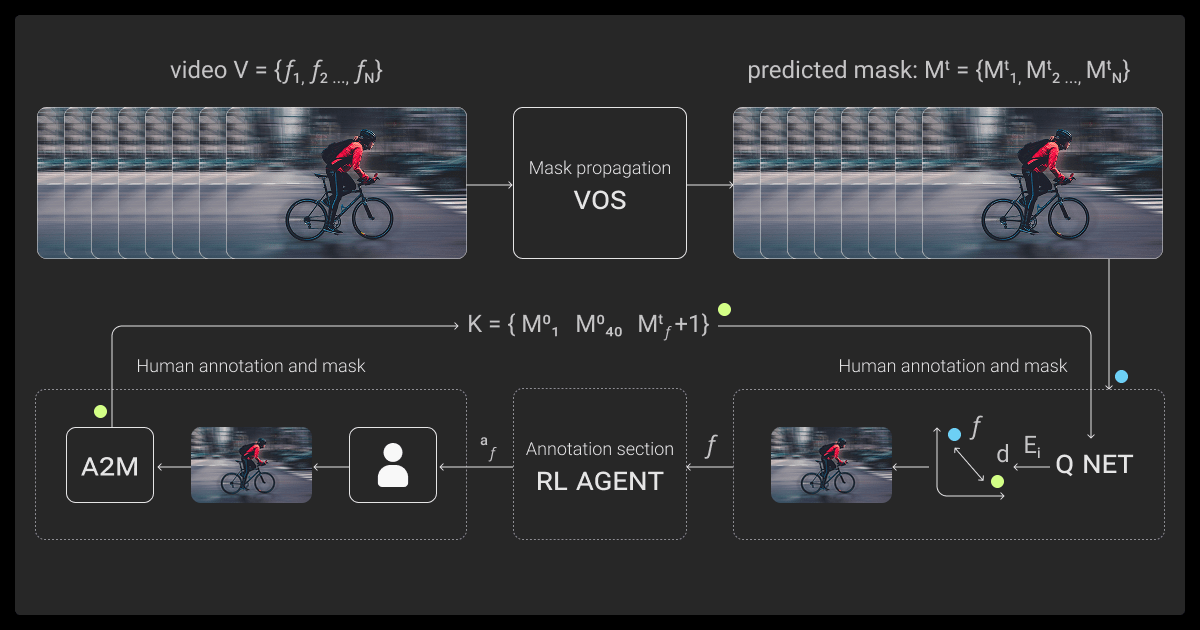Video Annotation Tools: Best Options for Object Tracking
Table of Contents

TL;DR
What to Look for in Video Annotation Tools for Object Tracking

The best video annotation tools for object tracking support frame interpolation, timeline editing, and persistent object IDs. These features reduce manual work and improve consistency, which is key for image recognition tasks.
If you're deciding how to annotate a video, choose a tool that fits your pipeline and handles real-world tracking challenges. A data annotation company can also help if you need to scale quickly or handle complex sequences.
Key Features to Consider

Object tracking in video requires consistent identity assignment, efficient frame handling, and scalable QA. Many tools support basic data annotation but break down when handling persistent IDs, occlusions, or large machine learning datasets.
Here’s what to evaluate before you commit:
Frame interpolation
Tools like V7, Encord, and Supervisely let you auto-label across frames. Without this, annotation slows down and tracking becomes inconsistent.
Persistent object IDs
For occlusions and multi-object scenes, ID tracking is a must. CVAT and Encord handle this well. Others may drop IDs or require manual fixes.
Review and QA workflows
Speed doesn’t matter without quality. Platforms like Labelbox and SuperAnnotate support reviewer roles, consensus, and rollback to manage QA.
Scalability and pricing model
Can it handle 100,000+ frames? Does data annotation pricing scale by object, hour, or clip? Some tools limit automation or exports on lower tiers. Dataloop and Label Your Data scale reliably.
The right video annotation software reduces manual rework, prevents identity switches, and keeps QA manageable as projects grow. Anything less adds risk to your pipeline and weakens the foundation of your machine learning algorithm.
How the Right Video Annotation Tool Impacts Your Model

The right video annotation tool does more than help you label frames. It shapes the quality of your training data, especially for AI video recognition models. Poor tracking leads to inconsistent labels, which weakens model performance and throws off object detection metrics during evaluation.
If you're asking who offers the best video annotation tools, start by looking at the use cases they support. Tools built for image annotation don’t always scale to long video sequences or complex object tracking. Prioritize features like frame interpolation, persistent IDs, and built-in QA if you're training a model that needs frame-level accuracy.
Label Your Data
Label Your Data offers a data annotation platform built for teams working on object tracking, segmentation, and video classification tasks. You can upload your data, choose annotation types, and manage the entire workflow without setup calls or volume requirements.
The platform supports frame-by-frame labeling with keypoints, polygons, and cuboids, and is built for teams that need quality and control without building custom infrastructure.
Key features of Label Your Data
Supports full video annotation suite: bounding boxes, polygons, cuboids, keypoints, segmentation
Free pilot project (10 frames) to test quality before committing
Frame-by-frame object tracking with ID consistency
Real-time project monitoring and team management dashboard
Built-in instruction generator and cost calculator
API access for automation and integration
Data compliance: ISO 27001, PCI DSS Level 1, GDPR, CCPA
Label Your Data is best for
ML teams building tracking models who want full control
Startups or researchers with limited budgets and niche video formats
Teams looking to manage everything from upload to download in one place
Enterprises that require security certification and workflow transparency
If the platform doesn’t meet all your requirements, you can switch to fully managed video annotation services handled by our in-house team. Some of our real-world use cases include annotating drone footage for object detection and supporting NATO-compliant workflows for defense AI.
CVAT
CVAT is an open-source video annotation tool built for teams that want full control over object tracking workflows. It supports manual and semi-automatic labeling with tools for bounding boxes, polygons, cuboids, and keypoints.
You can annotate long sequences, assign persistent object IDs, and integrate model-assisted tracking with OpenVINO or other custom plugins. CVAT isn’t the easiest to use out of the box, but it’s one of the most flexible, especially for teams with internal engineering support.
Key features of CVAT
Manual and semi-automatic labeling with interpolation and object ID tracking
Supports long videos with stable performance
Task management, QA, and annotation versioning built in
Model integration via plugins and automation scripts
Self-hosted or enterprise cloud deployment
Full control over annotation workflows and data storage
CVAT is best for
Technical teams needing customizable pipelines
Projects with privacy or infrastructure constraints
Use cases requiring object ID tracking over long sequences
Organizations with in-house MLOps or DevOps support
Labelbox
Labelbox is a cloud-based annotation platform with strong support for model-assisted workflows, ontology management, and QA pipelines. It supports video labeling with frame-by-frame tracking, interpolation, and object ID management.
Users can integrate custom models, automate parts of the workflow, and monitor dataset quality throughout the project. While the platform is fast to set up and API-friendly, performance may decline with very long sequences, and some video automation features are only available on paid tiers.
Key features of Labelbox
Frame-by-frame annotation with object tracking and interpolation
Model-in-the-loop support with custom model integration
Annotation review, consensus scoring, and dataset health tools
Project versioning, ontology management, and QA workflows
Python SDK, GraphQL API, and cloud deployment
Usage-based pricing with limited free tier; advanced video features gated
Labelbox is best for
Teams integrating model feedback directly into labeling
Projects with structured video tasks and short-to-mid-length clips
ML teams needing automation, QA tools, and version control
Organizations prioritizing dataset health and annotation governance
Annotation precision, automation features like frame interpolation, and seamless integration with ML pipelines are the top factors I consider. CVAT offers flexibility for precise tracking, while Labelbox supports large-scale, multi-user workflows.
V7 Darwin
V7 Darwin is a commercial video annotation tool built around deep learning workflows, with support for object tracking, segmentation, and multi-class labeling. Frame-by-frame annotation is available, featuring interpolation and persistent object IDs.
This is complemented by built-in model-assisted tools like Auto-Annotate and support for Segment Anything (SAM). The UI is optimized for speed, and the platform handles long sequences well, up to 100,000 frames per project. V7 also supports QA workflows, but many advanced features require a paid plan.
Key features of V7
Frame interpolation, object ID tracking, and timeline-based editing
Segment Anything (SAM) integration and Auto-Annotate tools
Strong support for segmentation: instance, semantic, panoptic
Task workflows, consensus review, and annotation version control
Scales to 100k+ frames with consistent UI performance
Web-based with API, SDKs, and integrations; paid tier required for automation
V7 is best for
Teams labeling complex video data with segmentation or masks
ML workflows using foundation models or custom pre-labeling
Projects requiring stable performance on large video sequences
Annotation teams working on AV, sports, or surveillance datasets
Encord
Encord is a training data platform with strong support for video object tracking, especially in medical imaging, AV, and surveillance applications. It offers frame-by-frame labeling with interpolation and persistent object IDs, along with native tools for ontology management and QA.
Teams can train and deploy models inside the platform to assist labeling, and use automation features like object re-identification across frames. The UI is powerful but may feel complex for simple projects, and the full feature set requires a paid plan.
Key features of Encord
Frame interpolation, persistent IDs, and timeline editor for video
Model-assisted labeling with object re-identification and tracking
QA workflows, task assignments, reviewer roles, and issue reporting
Ontology versioning, project templates, and label consensus tools
Python SDK and APIs for automation and MLOps pipelines
Supports long video sequences with high object count
Encord is best for
ML teams labeling complex, multi-object video datasets
Projects requiring detailed ontologies and consistent QA
Organizations deploying active learning or model-in-the-loop pipelines
Use cases in healthcare, robotics, and surveillance
SuperAnnotate
SuperAnnotate is a full-stack annotation platform with strong QA workflows and support for video object tracking. It includes timeline-based labeling with frame interpolation and object ID tracking, plus tools for multi-annotator consensus and reviewer scoring.
The platform integrates with custom models for pre-labeling and supports long video sequences, though real-time collaboration may be slower on high-frame-count projects. Most advanced features are available on paid plans, but the UI is accessible for both technical and non-technical users.
Key features
Frame interpolation, timeline view, and persistent object IDs
Consensus review, annotation scoring, and reviewer workflows
Model-assisted labeling via integrations or SDK
Annotation templates, ontology tools, and audit trail
API, CLI, and Python SDK for workflow automation
Cloud-based, with project-level permission control
Best for
Teams needing robust QA and version control
Multi-annotator projects with complex review workflows
Organizations labeling object tracking tasks at scale
Startups looking for a UI-friendly tool with automation options
Labellerr
Labellerr is a lightweight, cloud-based annotation tool focused on automation and fast project setup. It supports frame-by-frame labeling with interpolation and pre-labeling using Segment Anything or custom models.
While it can be used for object tracking tasks, it lacks full support for persistent IDs across frames and doesn’t offer built-in reviewer roles or QA scoring. Its strength lies in handling short video clips with minimal setup, making it a practical option for small teams and early-stage ML projects. Long videos may need to be chunked manually.
Key features of Labellerr
Frame-by-frame annotation with interpolation tools
Pre-labeling support via Segment Anything and foundation models
No-code UI with simple dashboard and quick onboarding
Usage-based pricing with cost calculator; no volume lock-in
API access for basic automation; free trial available
Labellerr is best for
Small teams labeling short video sequences
Projects with limited QA or review complexity
Startups needing fast, affordable annotation with built-in automation
Non-technical users working with lightweight video pipelines
Supervisely
Supervisely is a developer-focused platform with strong video annotation tools and powerful SDK support. It handles long sequences well and supports timeline-based editing, interpolation, and persistent object IDs.
The platform includes version control, QA workflows, and collaborative features. But its real strength is in customization; teams can write Python scripts to automate tasks, extend the UI, or build custom review logic. The tradeoff: the interface can be complex, and full functionality is gated behind paid tiers.
Key features of Supervisely
Timeline editor with interpolation and object ID tracking
Annotation versioning, reviewer roles, and status tagging
Python SDK, API, and visual scripting for UI automation
Plugin marketplace and customizable annotation templates
Strong performance on long sequences and large objects
Self-hosted or cloud deployment options
Supervisely is best for
ML teams with in-house engineers or scripting experience
Projects needing customizable workflows and plugins
Video datasets with many objects or long sequences
Organizations combining annotation with model prototyping
We switched to Supervisely for sports tracking and saw annotation speed triple. It handles high-frame-rate videos well and makes real-time team collaboration possible.
Kili Technology
Kili Technology supports video labeling with core features like frame interpolation, timeline editing, and object ID assignment. It performs well on short to mid-length sequences, but may slow down when working with long videos or dense multi-object scenes.
The platform focuses heavily on labeling quality, offering QA tools like consensus review, status tagging, and task assignment. While it integrates with custom models via Python SDK and API, advanced features, such as model-in-the-loop workflows or full QA customization, are gated behind higher pricing tiers. The UI is clean and accessible, especially for teams without in-house engineering support.
Key features of Kili Technology
Frame interpolation, object ID tracking, and basic video playback tools
Annotation review, consensus scoring, and reviewer roles
Task queues, annotation status, and project templates
Python SDK and REST API for integration
Cloud-based with usage-based pricing and feature gating
Simple UI for structured collaboration
Kili Technology is best for
Teams working on short or mid-sized object tracking projects
Organizations prioritizing annotation quality and reviewer oversight
Projects that don’t rely on segmentation tools or advanced automation
ML teams that want a guided platform without engineering overhead
Dataloop
Dataloop is a cloud-based data engine with integrated video annotation tools, model hosting, and QA workflows. It supports frame-by-frame labeling, interpolation, and object ID persistence, along with task queues, issue tracking, and reviewer roles.
Its strength lies in automation: you can deploy pre-trained models inside the platform or connect external models to assist with labeling. The UI is collaborative and flexible, but full access to automation and review features depends on your pricing tier. Long video support is stable but better suited for chunked task assignments.
Key features of Dataloop
Frame interpolation and persistent object IDs
Timeline UI with class switching and object linking
Reviewer workflows, issue tagging, and QA feedback
Model-in-the-loop tools, including hosted inference
SDK and REST API for automation pipelines
Role-based collaboration and task-level permissions
Dataloop is best for
Teams labeling object tracking datasets with built-in automation
Projects requiring review loops and structured feedback
ML pipelines that benefit from hosted model inference
Enterprise teams managing large, multi-user annotation projects
When to Use a Service vs. Self-Serve Tool

Choosing between video annotation tools and managed data annotation services depends on your resources, deadlines, and project complexity.
If your team’s already labeling in-house, one of the best video annotation tools can give you full control. But if you’re working with thousands of frames or complex multi-object tracking, a service may save more than just time.
The best tools let you QA inside the platform, export in multiple formats, and onboard annotators with minimal training. Anything else will slow your team or burn your budget.
Use a Tool When
You have in-house annotators and need full control.
Data stays local or in your secure cloud
You manage the project, workforce, and QA
Works well for short to mid-length sequences
Best for teams that already built internal labeling processes
Use a Service When
You need scale or help with complex tracking.
Multi-object scenes, occlusions, and long sequences overwhelm your internal team
You don’t have time to recruit or train annotators
Service vendors can handle setup, QA, and delivery
Ideal when throughput matters more than internal control
About Label Your Data
If you choose to delegate data annotation, run a free data pilot with Label Your Data. Our outsourcing strategy has helped many companies scale their ML projects. Here’s why:
No Commitment
Check our performance based on a free trial
Flexible Pricing
Pay per labeled object or per annotation hour
Tool-Agnostic
Working with every annotation tool, even your custom tools
Data Compliance
Work with a data-certified vendor: PCI DSS Level 1, ISO:2700, GDPR, CCPA
FAQ
What is video data annotation?
Video data annotation means adding labels to objects in video frames. These labels help train machine learning models. You might draw boxes around cars, track people over time, or mark key points on moving objects. It helps the model learn what to look for in each frame.
What is the best tool to annotate a video?
It depends on your project. CVAT is a solid free tool if you're labeling in-house. For automation and built-in tracking features, platforms like V7 Darwin, Encord, or Labelbox are often used.
If you want both a platform and the option to offload complex tasks, Label Your Data offers a hybrid model. You can label video data yourself or switch to managed services when scale or quality becomes a challenge.
Does Google have an annotation tool?
Yes. Google Cloud offers Vertex AI Video, which can label video data for tasks like classification and object tracking. It works well for adding high-level labels or building automated pipelines. But it’s not built for manual frame-by-frame annotation like CVAT, V7, or Label Your Data. If you need detailed tracking or manual review, you’ll likely need a separate tool.
How do I choose a tool that handles interpolation and tracking well?
Look for tools that support automatic interpolation, object linking, and persistent IDs. These features let you label an object once and have it track across frames, saving hours on long videos. CVAT, V7, and Supervisely all offer this, but some tools only support manual frame-by-frame editing.
If you’re working with fast-moving or occluded objects, pick a platform with timeline editing and visual tracking aids. For large projects, tracking performance and reviewer tools matter just as much as raw speed.
Written by
Karyna is the CEO of Label Your Data, a company specializing in data labeling solutions for machine learning projects. With a strong background in machine learning, she frequently collaborates with editors to share her expertise through articles, whitepapers, and presentations.




